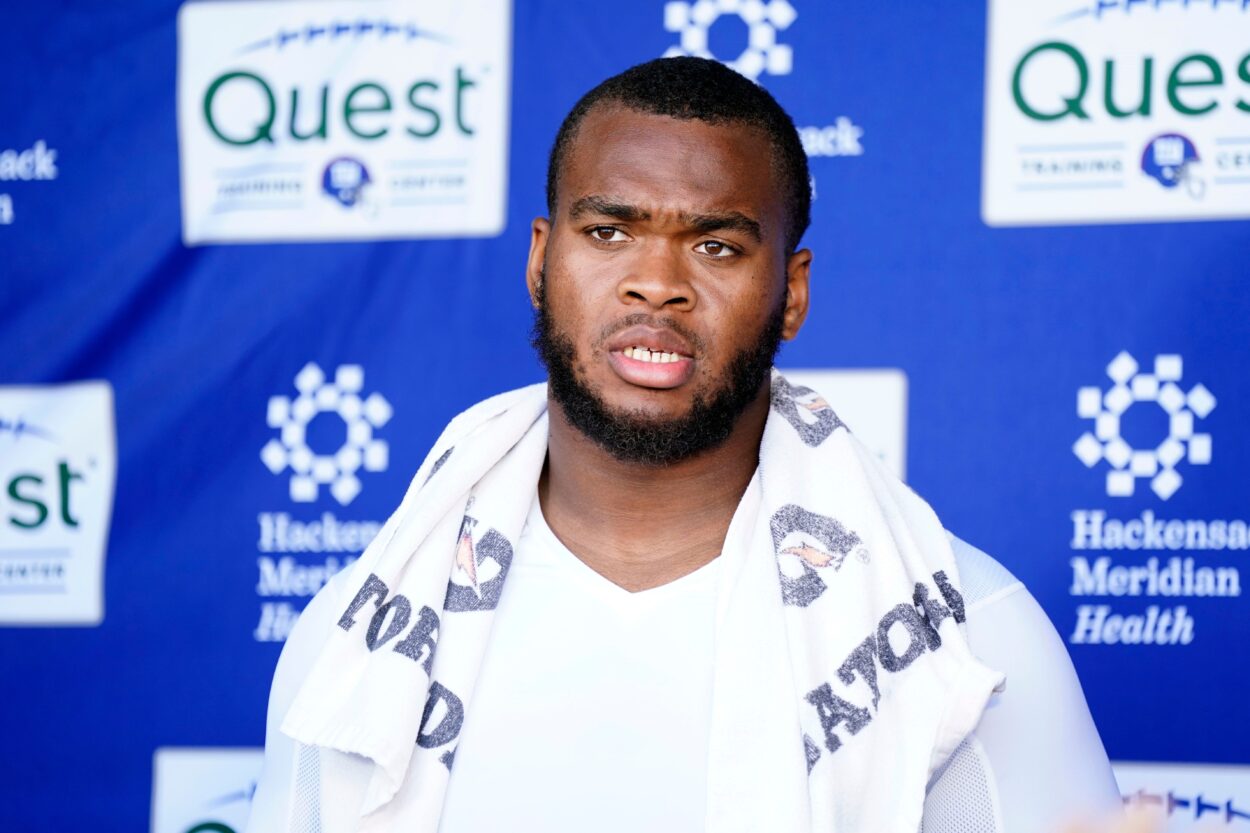
The New York Giants have reached the point of no return with Evan Neal. The former seventh overall pick in the 2022 NFL Draft was supposed to be a foundational piece of the offensive line — a tone-setter who could protect the quarterback and anchor the right side for years. Instead, he’s become a symbol of one of the organization’s most glaring failures in talent evaluation and player development.
With the team declining his fifth-year option and failing to find a trade partner before the deadline, Neal is now set to become a free agent after the 2025 season. That’s the final chapter in a frustrating, underwhelming tenure that never lived up to the promise of his draft-day potential.

A wasted opportunity with lasting consequences
When the Giants selected Neal out of Alabama, the vision was clear: pair him with Andrew Thomas and solidify the tackle spots for the next decade.
On paper, it was a smart move. But three years later, the results have been brutal. Neal has struggled mightily in pass protection, ranking near the bottom of the league in pressure and sack rates allowed since entering the NFL.
More concerning than the numbers is how little progress he’s made. Injuries have played a part, but the technique issues, footwork problems, and confidence gaps have persisted through multiple offseasons.
The Giants invested a premium pick — one they desperately needed to hit on — and are walking away with nothing but dead cap space and regret.
High-value draft picks are the lifeblood of roster building in the modern NFL. They’re how teams stay competitive without overspending in free agency. When you whiff on one that high, it doesn’t just hurt the position — it sets back the entire organization.
Neal’s failure to develop has forced the Giants to keep patching the offensive line year after year instead of building stability around a young core.
Joe Schoen’s evaluation and development dilemma
This isn’t just about Neal. It’s about the system around him. General manager Joe Schoen inherited a roster full of holes, but the offensive line has remained one of the team’s most consistent failures. Even after investing draft capital and free-agent money, the Giants are still struggling to protect Jaxson Dart, notably on the interior.
Neal’s case highlights a two-fold issue — questionable scouting and weak player development. Schoen and his staff saw an All-American right tackle and assumed his power and athleticism would translate seamlessly. It didn’t. And when it didn’t, the coaching staff couldn’t fix it.
That’s a problem that goes deeper than one player. It’s a reflection of a developmental structure that simply isn’t producing results.
They’ve since tried to move him to offensive guard, but his progress during training camp was minimal at best. There were mixed reviews, but he’s been a healthy scratch for most of the season, so far.

Where do the Giants go from here?
Letting Neal hit free agency next year feels inevitable now, but it also represents a massive missed opportunity. The Giants couldn’t even move him for a late-round pick — a stunning outcome for a player drafted in the top ten just three years ago.
The front office may try to spin it as a clean slate, but fans have every right to question how a premium talent from a powerhouse program turned into a lost cause this quickly. Was it a misjudgment? Poor coaching? A mix of both?
Either way, the damage is done. The Giants threw Evan Neal to the wolves, and now they’re left with another first-round failure — and a deeper hole to dig out of heading into another critical offseason.
